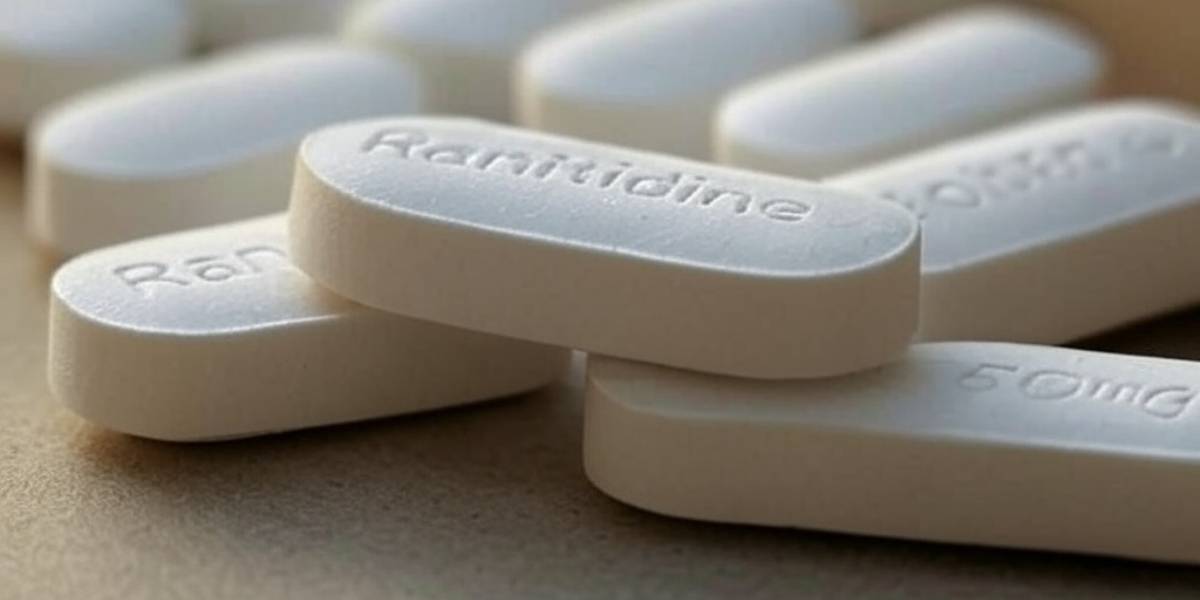The CDSCO has directed all state and union territory drug regulators to ensure manufacturers monitor levels of NDMA, a potentially carcinogenic compound, in both raw materials and finished formulations.
Published Aug 03, 2025 | 3:31 PM ⚊ Updated Aug 03, 2025 | 3:31 PM

Ranitidine tablets.
Synopsis: For nearly three decades, ranitidine tablets have been a mainstay in both public and private healthcare institutions in India. However, now, India’s drug regulatory authority has renewed its scrutiny of this medical staple, following concerns about cancer-causing impurities found within its formulation.
Walk into any Primary Health Centre (PHC) across India with a complaint of heartburn, stomach pain, or even a mild fever, and there’s a good chance you’ll walk out with a familiar strip of ranitidine tablets. For nearly three decades, this antacid – sold under names like Aciloc, Rantac, R-Loc, Ranitin, and Zinetac – has been a mainstay in both public and private healthcare institutions, dispensed routinely from bustling urban clinics to remote rural health posts.
This widely-prescribed medication has treated countless Indians for acid reflux, ulcers, and gastric discomfort, earning its place as one of the most trusted drugs in the country’s healthcare system.
However, now, India’s drug regulatory authority has renewed its scrutiny of this medical staple, following concerns about cancer-causing impurities found within its formulation.
The Central Drugs Standard Control Organisation (CDSCO) has directed all state and union territory drug regulators to ensure manufacturers monitor levels of NDMA (N-Nitrosodimethylamine), a potentially carcinogenic compound, in both raw materials and finished formulations – a move that comes nearly five years after an effective global ban on the medicine.
The directive comes from the Drugs Controller General of India (DCGI), Dr Rajeev Singh Raghuvanshi, following recommendations by the Drugs Technical Advisory Board (DTAB) during its 92nd meeting in April.
In a letter to states on 24 July, the DCGI said that the issue is related to the safety of ranitidine due to the presence of NDMA impurity has been under consideration “for quite some time now” and that his office has taken various measures from time to time.
“In this regard, an expert committee was constituted in December. The report of the expert committee was placed before the 92nd Drugs Technical Advisory Board (DTAB) meeting held on 28 April,” said Dr Raghuvanshi.
The DTAB, after detailed deliberation, recommended that:
NDMA is classified by the World Health Organisation (WHO) as a probable human carcinogen, with links to cancers of the liver, kidneys, and gastrointestinal tract following long-term exposure.
Its presence in ranitidine formulations was first flagged globally in 2019, prompting recalls and restrictions in the United States, European Union, and other countries.
NDMA can form in ranitidine under specific conditions, especially when the drug is stored for extended periods or at high temperatures — conditions commonly encountered in India’s vast and sometimes poorly regulated pharmaceutical supply chain. Studies suggest that the chemical may also form within the human body when ranitidine is exposed to acidic environments, such as in the stomach.
A recent assessment by the Central Drug Laboratory in Kolkata found NDMA levels above the internationally accepted limit of 0.32 parts per million (ppm) in 21 out of 42 ranitidine samples tested. Some samples showed contamination as high as 5.19 ppm – a level considered significantly above safe exposure thresholds.
“The Board deliberated in detail and observed that a broader committee is essential to look into all contributing factors, including how ranitidine is stored across the supply chain,” the DTAB minutes of the meeting read.
It also urged manufacturers to take risk-based measures, including reducing shelf life where necessary and ensuring tighter control of NDMA levels in both raw and finished products.
Despite the warnings, ranitidine continues to be widely prescribed in India, particularly in government-run healthcare settings where it remains a low-cost treatment option for acid reflux and ulcers.
Timeline of global action vs India’s response
1981: Ranitidine was first launched by Glaxo Holdings Ltd (now GSK) under the brand name Zantac.
1995: Became available over-the-counter in India.
Pre-2019: Widely prescribed in India under various brand names to treat acid reflux, ulcers, and heartburn. Included in India’s National List of Essential Medicines (NLEM).
2019: The US FDA detected NDMA in ranitidine and issued a safety alert. Regulatory bodies in the EU, Canada, Australia and Japan launched independent investigations. GSK voluntarily withdrew Zantac from the Indian market; generic versions remained available.
2020: The US FDA called for the withdrawal of all ranitidine products. Several countries banned or suspended the drug. India’s CDSCO began monitoring but did not impose a ban.
2022: India removes ranitidine from NLEM.
2024: An expert committee was set up to assess ranitidine safety. Tests by the Central Drug Laboratory in Kolkata found 21 of 42 samples with NDMA above permitted limits, some reaching levels over 5 ppm. The panel recommended suspending the drug’s manufacture, sale, and distribution.
(Edited by Muhammed Fazil.)
